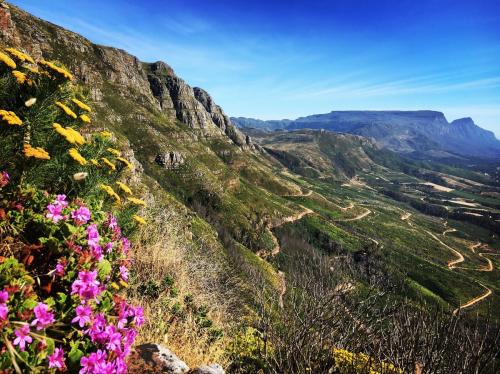Quick Overview
Silvermine Nature Reserve is a stunning Cape Town gem established in 1898 to protect water catchment and unique fynbos ecosystems. From scenic hiking trails and mountain biking to tranquil picnics and birdwatching, the reserve offers something for every nature lover.
This guide shares must-know tips, history, flora and fauna insights, safety advice, suggested budgets, and local recommendations — all from my personal visits.
Whether you’re planning a day trip or a multi-day stay, this is your comprehensive resource to explore Silvermine like a local and get the most out of your visit.
In this guide, I’ll take you through everything you need to know—from how to get there and where to stay to pro tips on hiking, safety, and saving money. Let’s dive in!
Silvermine’s History and Origins
Silvermine Nature Reserve was officially established in 1898, initially designated as a water catchment area to supply the rapidly expanding Cape Town. Interestingly, the name “Silvermine” comes from early assumptions about silver deposits here — which later turned out to be a myth.
The area also has a military legacy; during World War II, it served as an anti-aircraft training ground for the South African Army. Finally, in 1960, the government declared the area a nature reserve to conserve its unique flora and fauna.
Exploring Silvermine’s Unique Flora and Fascinating Wildlife
The reserve is a biodiversity hotspot characterized by two main vegetation types: fynbos and indigenous forest. The fynbos, unique to the Cape Floral Kingdom, boasts shrubs, heaths, and spectacular proteas. Meanwhile, the indigenous forests are lush with yellowwood, stinkwood, and wild olive trees.
On the fauna front, expect to see baboons (the locals’ most famous residents), dassies (rock hyrax), mongooses, various snakes and lizards, and over 50 bird species — including the Cape Sugarbird and African Fish Eagle.
Pro tip: Always keep a respectful distance from baboons. They’re curious but can be aggressive, especially if they sense food.
Unmissable Activities and Adventures in Silvermine Nature Reserve
Whether you’re a thrill-seeker or looking for a relaxing day in nature, Silvermine offers a wealth of recreational options:
Hiking & Walking Trails
The reserve features a variety of trails catering to all fitness levels:
- Elephant’s Eye Cave Trail: A moderate hike rewarding you with panoramic views through a natural rock cave.
- Silvermine River Trail: An easy, family-friendly path following the river with plenty of birdwatching opportunities.
- Noordhoek Peak Trail: A more challenging ascent for stunning vistas over the Cape Peninsula.
Mountain Biking
For cyclists, Silvermine’s trails range from beginner to advanced levels, weaving through fynbos and forest landscapes. Rentals and guided tours are available nearby, but bringing your own bike gives you freedom to explore.
Picnickithe freedomSwimming
The dam area features well-maintained picnic spots complete with braai (barbecue) facilities and shaded tables. On hot days, the dam offers a refreshing swimming spot surrounded by breathtaking mountain views.
Fishing
Fishing enthusiasts can cast a line in Silvermine Dam, provided they have a valid fishing permit. It’s a tranquil experience, but check current regulations and permit availability ahead of time.
Rock Climbing & Horse Riding
The reserve hosts several rock climbing routes suitable for various skill levels. Horseback riding trails also offer a unique way to immerse yourself in the landscape. Local stables provide guided rides if you’re new to equestrian adventures.
Birdwatching
Bird lovers will find Silvermine a paradise. Don’t miss the chance to spot the colorful Orange-breasted Sunbird or heorange majestic sunbird Fish Eagle.
How Silvermine Nfish eaglerve is Conserved and Protected
Managed by South African National Parks (SANParks), Silvermine’s conservation efforts focus on protecting its endemic flora and fauna while balancing visitor access. Key initiatives include:
- Alien Plant Removal: Removing invasive species threatening indigenous vegetation.
- Fire Management: Controlled burns mimic natural fire cycles to maintain fynbos health without risking large wildfires.
- Baboon Management: Trained rangers and baboon-proof bins reduce human-wildlife conflict.
- Education & Awareness: SANParks offers guided walks, talks, and workshops to engage visitors in conservation.
From my experience, joining a guided walk not only enhances your visit but also deepens your understanding of this fragile ecosystem.
Planning Your Visit: Essential Tips and Practical Information
Opening Hours & Entrance Fees
Silvermine is open year-round, 7 days a week. Gates typically open from 7:30 AM to sunset. The main entrance is at Silvermine Dam, with additional access via Tokai Forest.
Entrance Fees
South African Residents: R45 per adult, R25 per child
International Visitors: R100 per adult, R50 per child
Children under 6 enter free.
Additional Fees
Fishing Permit: R70 (purchase at entrance)
Guided Tours & Horse Riding: Variable rates (contact local operators)
Suggested Budget
For a day trip, budget around R150–R250 per person covering entrance, snaperson,nd optional activities like horse riding or guided tours. Bringing your own picnic is a great way to save. Parking is free but can fill up on weekends.
How to Get There
Silvermine is about 30 minutes from Cape Town city center by car. The best route is via Ou Kaapse Weg (M64), which offers scenic mountain driving. Public transport is limited; consider ride-shares or tours if you don’t have a car.
Where to Stay Nearby
If you want to extend your visit overnight or longer, consider staying in nearby areas like Noordhoek, Tokai, or Muizenberg. These areas offer a range of accommodation options from budget guesthousoptions,outique hotels.
- Noordhoek Farm Village Cottages: Cozy self-catering cottages close to nature.
- Tokai Forest Lodge: Rustic charm near hiking trails.
- Muizenberg Beach B&B: Surf town vibes just 20 mins away.
Safety Tips and Lminutes Etiquette
- Carry plenty of water and sun protection—Cape Town sun is strong.
- Stay on marked trails to avoid getting lost and protect flora.
- Do not feed or approach wildlife, especially baboons and snakes.
- Dispose of all rubbish responsibly — use provided bins or take your trash home.
- Inform someone of your plans if hiking alone.
- Check weather conditions before your trip—mountain weather can change quickly.
Frequently Asked Questions (FAQs)
- Is Silvermine Nature Reserve suitable for kids?
- Absolutely! Many trails like the Silvermine Ritrails,ail are easy and family-friTrail,, with picnic areas and safe swimming spots.
- Can I bring my dog?
- Pets are not allowed inside the reserve to protect wildlife and other visitors.
- Are there guided tours available?
- Yes, SANParks offers guided walks and nature talks. Additionally, local operators provide horse riding and mountain biking tours.
- Is it safe to swim in Silvermine Dam?
- Yes, swimming is permitted, but always be cautious of slippery rocks and changing water levels.
- When is the best time to visit?
- Spring (August–October) is ideal for wildflower viewing, while summer offers great swimming weather. Avoid winter if you want to skip rainy days.
Final Thoughts: Why Silvermine Should Be on Your Cape Town Bucket List
Silvermine Nature Reserve perfectly balances natural beauty, outdoor adventure, and conservation. Its accessibility and variety of activities make it a go-to for locals and tourists alike. Personally, every visit leaves me refreshed, inspired, and connected to Cape Town’s unique wilderness. Whether you’re hiking to Elephant’s Eye Cave, enjoying a peaceful picnic, or spotting endemic birds, Silvermine delivers memorable experiences that stay with you long after the trip.
I hope this guide helps you plan your visit and uncover the magic of Silvermine Nature Reserve!







